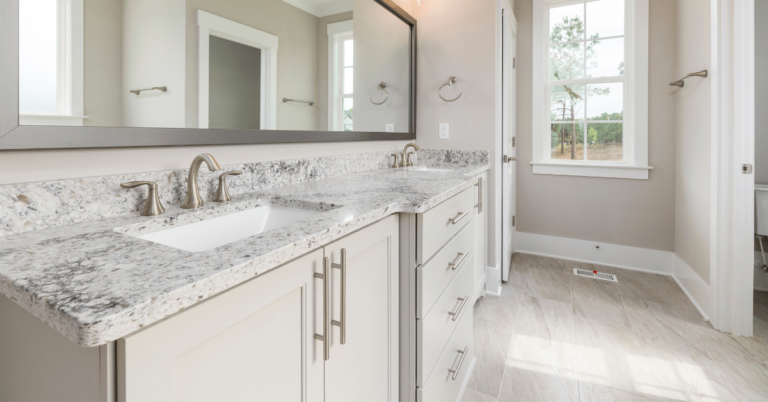When designing your kitchen, one of the most significant decisions you’ll make is choosing the right countertop. Countertops serve both functional and aesthetic purposes, impacting the overall look and feel of your space. Among various factors to consider, the finish—matte or glossy—is pivotal. This guide will help you understand the differences between these two finishes, assisting you in making an informed decision that complements your kitchen’s style and meets your practical needs.
Understanding Sheen: Glossy vs. Matte Countertops
The sheen of a countertop refers to its shine level, with glossy finishes reflecting light and creating bright highlights, while matte finishes diffuse light for a softer look. Both options have their unique characteristics and are available in a variety of materials.
Glossy Countertops
Glossy countertops are renowned for their high reflectivity, creating an eye-catching sparkle in your kitchen. They can enhance lighting effects and make spaces feel more expansive, although they may also produce glare in certain settings. Common materials offering a glossy finish include:
- Granite
- Marble
- Quartz
- Stainless Steel
Matte Countertops
In contrast, matte countertops exhibit a more subdued appearance. Their soft, non-reflective surface effectively hides smudges, fingerprints, and minor scratches better than glossy counterparts. Matte finishes are typically available in materials like:
- Laminate
- Solid Surface
- Honed or Brushed Stone
Key Differences Between Matte and Glossy Countertops
1. Appearance and Aesthetics
- Glossy: Offers a dramatic, shiny surface that reflects light, making it ideal for striking visual effects. However, they require frequent polishing to maintain their shine and can highlight scratches and nicks.
- Matte: Provides a softer, understated look that diffuses light and minimizes glare. Matte surfaces create a cozy, inviting atmosphere while hiding minor imperfections.
2. Cleaning and Maintenance
- Glossy: While it’s easy to spot smudges and spills, glossy countertops require regular cleaning to keep their shine intact. Missed spots can become noticeable quickly.
- Matte: These surfaces can disguise minor stains and spills, making them appear cleaner over time. However, because they may absorb stains more readily, it’s essential to clean them promptly.
3. Durability
- Glossy: The high reflectivity of glossy surfaces means they may show scratches more easily, which can raise concerns about longevity in high-use kitchens.
- Matte: Matte finishes tend to hide scratches and dings better, often giving the impression of lasting durability.
4. Cost Considerations
- Glossy: Typically, glossy finishes may be less expensive, especially in common materials like granite and quartz, often produced with a high-gloss polish.
- Matte: While matte finishes can sometimes cost more due to the additional processing required, this is not universally true across all materials.
5. Installation
Both finishes generally follow the same installation processes, though glossy surfaces may require extra polishing to achieve their shine.
Making the Right Choice for Your Kitchen
Choosing between matte and glossy countertops ultimately boils down to personal preference and how you plan to use your kitchen. Here are a few considerations to guide your decision:
Consider Your Lifestyle
- Family-Friendly: For families with kids or high kitchen traffic, matte finishes may be more practical due to their ability to hide wear and tear.
- Entertaining: If you frequently entertain and want to make a bold statement, glossy countertops can create a stunning backdrop.
Visualize Your Space
Before making a final decision, take the time to explore samples and visualize how each finish will work in your kitchen space. Consider factors like natural light, kitchen size, and your existing décor.
Conclusion
In the end, both matte and glossy countertops have their pros and cons, and the best choice will depend on your individual needs and design preferences. As part of your home improvement project, selecting the right countertop will ensure your kitchen is both functional and stylish, reflecting your personal taste and enhancing the overall aesthetic for years to come.

